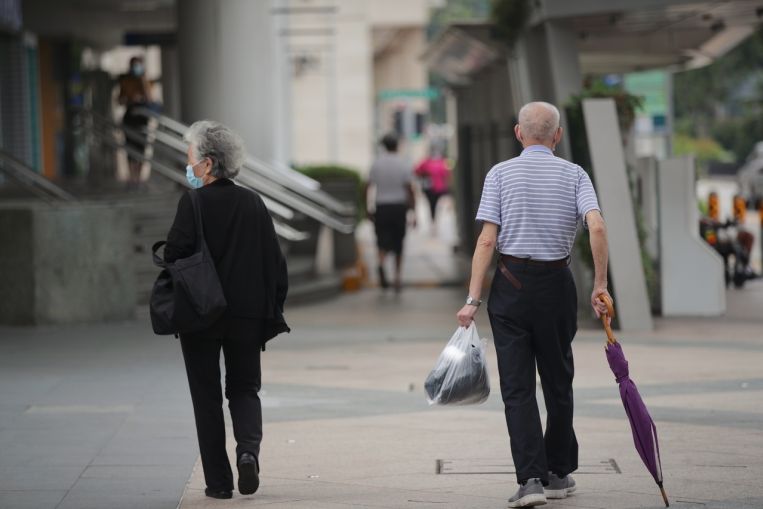SINGAPORE – Retiree households were the hardest hit by inflation among all the household groups last year, according to a Singapore Department of Statistics (SingStat) report released on Tuesday (July 13).
Overall inflation for retiree households – those comprising only non-employed people aged 65 and above – rose marginally by 0.1 per cent last year.
Higher food prices and accommodation costs more than offset lower costs of electricity and outpatient services for this group, said SingStat.
Meanwhile, prices fell for all the other household groups – general households, those with young children, as well as the lowest 20 per cent, middle 60 per cent and highest 20 per cent income groups. Inflation ranged from minus 0.1 to minus 0.4 per cent for these groups.
Last year’s higher inflation rate for retirees, compared with other households, reversed a trend from 2015 to 2019. Retiree households faced lower inflation than other household groups during those years partly due to subsidies under the Pioneer Generation Package and Merdeka Generation Package.
Inflation for retiree households outstripped that for the other groups last year partly because of increased costs of food, excluding food services, and hospital services, which accounted for larger shares of their expenditure basket.
Lower costs of discretionary expenditure items such as private transport also reduced consumer prices for retirees to a smaller extent as these items made up a lower share of retirees’ total expenditure.
“The enhancement of pre-school subsidies in January 2020, which lowered the CPI of most of the other household groups, had no impact on retiree households,” said SingStat.
The CPI is designed to measure the average price changes in a fixed basket of goods and services commonly purchased by resident households over time.
Meanwhile, households with young children enjoyed the largest decline in consumer prices of 0.4 per cent.
They were mainly helped by the enhancement of pre-school subsidies in January last year, which had the largest dampening effect on their CPI, given that the share of pre-school education out of their total expenditure was higher than that for other household groups.
Retiree households made up 7.5 per cent – or 102,300 households – of all resident households last year while those with young children accounted for 26.9 per cent.
The consumer price changes were calculated using 2019 as a base. The top three areas of expenditure for retiree households that year were housing and utilities, food, and healthcare.
These areas collectively made up 72.5 per cent of retiree households’ total expenditure.
Healthcare expenditure as a share of total expenditure was the highest for retiree households, at 11.2 per cent, compared with the other household groups. A bulk of their expenses went to hospital services, as well as intermediate and long-term care services like community hospitals and nursing homes.
Households with young children spent the most on housing and utilities, transport, and food in 2019 – similar to general households. These items accounted for a total of 60 per cent of their total expenditure.
Households with young children had the lowest proportion of expenditure on housing and utilities, at 21.4 per cent, among the household groups.
Their percentage of expenditure on education was the highest, at 11.1 per cent, as they had a far larger share of households with at least one full-time student compared with other household groups.













































